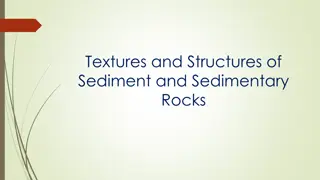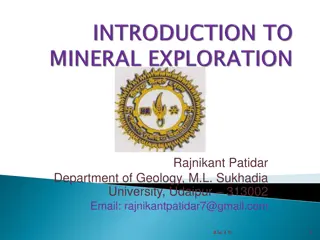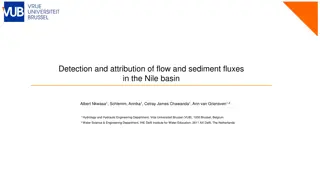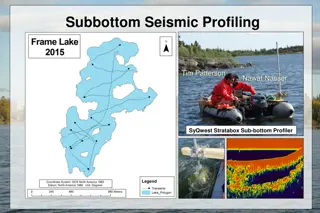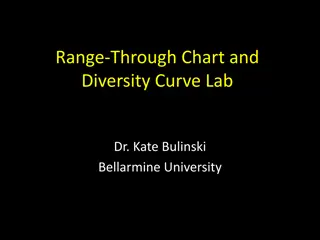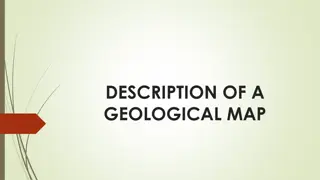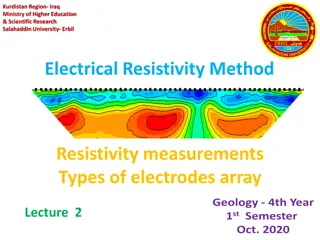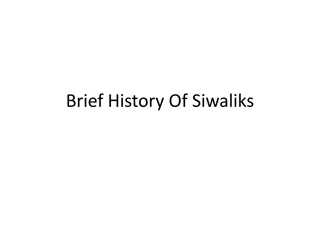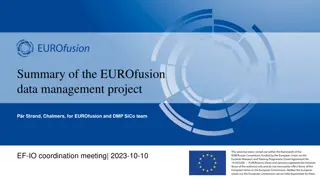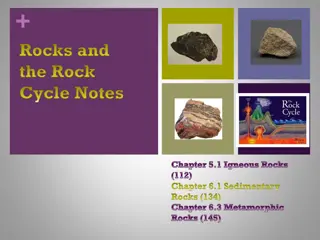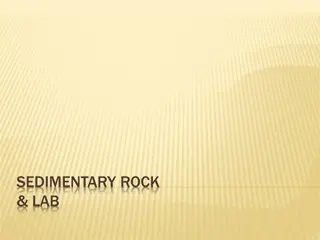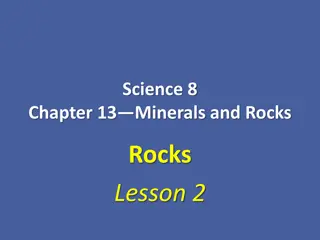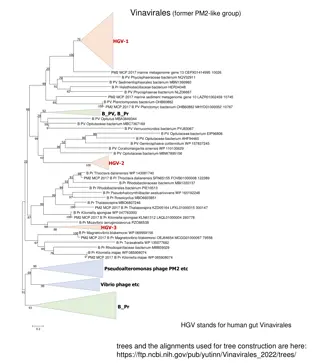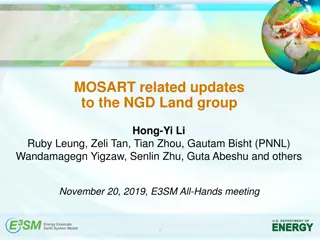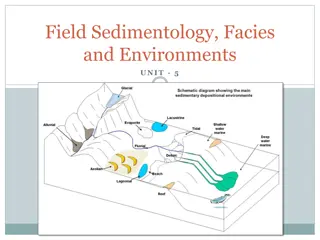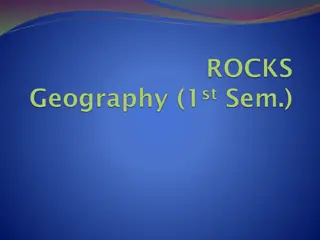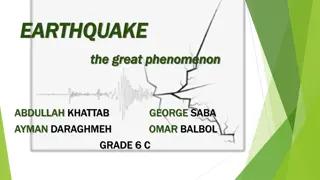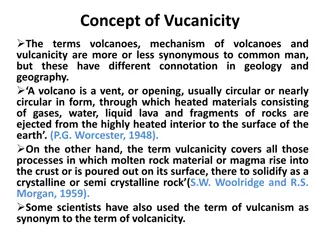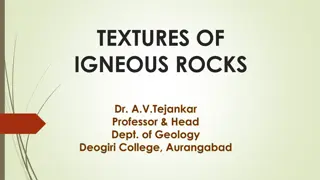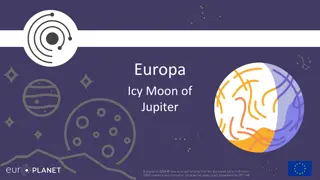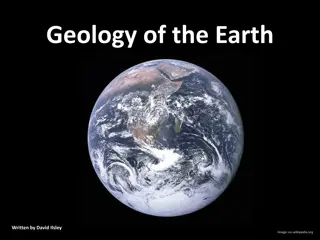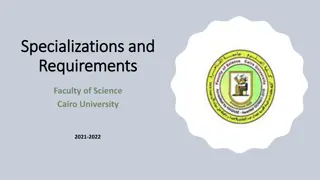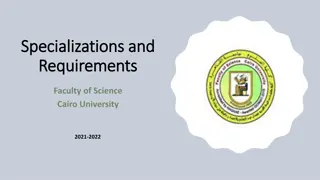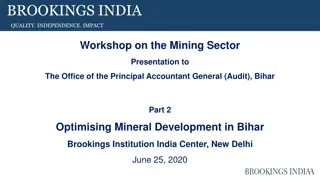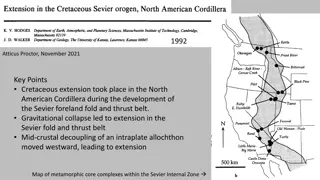Understanding Sediment Provenance in Geology
Sediment provenance in geology involves reconstructing the origin of sediments through compositional analyses to determine erosion history and geographical origins. It helps characterize the journey of sediments from source to sink, providing insights into tectonic and paleoclimatic histories. Provenance studies also play a crucial role in various scientific inquiries related to continental growth, plate collision times, monsoon intensity, and more. Provenance methods are widely applied in the oil and gas industry, particularly in hydrocarbon exploration to understand sand frameworks' responses to diagenesis. Transportation of detritus from higher to lower elevations occurs through gravity, water, wind, or glacial movements, shaping sediment particles along the way.
Download Presentation

Please find below an Image/Link to download the presentation.
The content on the website is provided AS IS for your information and personal use only. It may not be sold, licensed, or shared on other websites without obtaining consent from the author. Download presentation by click this link. If you encounter any issues during the download, it is possible that the publisher has removed the file from their server.
E N D
Presentation Transcript
Introduction Provenance in geology, is the reconstruction of the origin of sediments. The Earth is a dynamic planet, and all rocks are subject to transition between the three main rock types: sedimentary, metamorphic, and igneous rocks (the rock cycle). Rocks exposed to the surface are sooner or later broken down into sediments. Sediments are expected to be able to provide evidence of the erosional history of their parent source rocks. The purpose of provenance study geographic and paleo-climatic history. In the modern geological lexicon, "sediment provenance" specifically refers to the application of compositional analyses to determine the origin of sediments. This is often used in conjunction with the study of exhumation histories, interpretation of drainage networks and their evolution, and forward-modelling of paleo-earth systems. In combination, these help to characterise the "source to sink" journey of clastic sediments from hinterland to sedimentary basin. is to restore the tectonic, paleo-
In sedimentary petrology, the term provenance deals with the question where sediments originate from. The purpose of sedimentary provenance studies is to reconstruct and to interpret the history of sediment from parent rocks at a source area to detritus at a burial place. The studies of provenance involve the following aspects: "(1) the source(s) of the particles that make up the rocks, (2) the erosion and transport mechanisms that moved the particles from source areas to depositional sites, (3) the depositional setting and depositional processes responsible for sedimentation of the particles (the depositional environment), and (4) the physical and chemical conditions of the burial environment and diagenetic changes that occur in siliciclastic sediment during burial and uplift". The ultimate goal of provenance studies is to investigate the characteristics of a source area by analyzing sediments. Provenance studies are conducted to investigate many scientific questions, for example, the growth history of continental crust, collision time of Indian and Asian plates, Asian monsoon intensity, and Himalayan exhumation. the composition and texture of
Meanwhile, the provenance methods are widely used in the oil and gas industry. "Relations between provenance and basin are important for hydrocarbon exploration because sand frameworks of contrasting detrital compositions respond differently to diagenesis, of porosity reduction with depth of burial. Source of Detritus and thus display different trends All rock exposed at the Earth's surface is subjected to physical or chemical weathering and broken down into finer grained sediment. All three types of rocks (igneous, sedimentary and metamorphic rocks) can be the source of detritus.
Transportation of Detritus Rocks are transported downstream from higher elevation to lower elevation. Source rocks and detritus are transported by gravity, water, wind or glacial movement. The transportation process breaks rocks into smaller particles by physical abrasion, from big boulder size into sand or even clay size. At the same time minerals within the sediment can also be changed chemically, only minerals that are more resistant to chemical weathering can survive minerals zircon, tourmaline and rutile). During the transportation, minerals can be sorted by their density, and as a result, light minerals like quartz and mica can be moved faster and further than heavy minerals (like zircon and tourmaline). (e.g. ultrastable
Accumulation of Detritus After a certain distance of transportation, detritus reaches a sedimentary basin and accumulates in one place. With the accumulation of sediments, sediments are buried to a deeper level and go through diagenesis, which turns separate sediments into sedimentary rocks (i.e. conglomerate, sandstone, mudrocks, limestone etc.) and some metamorphic rocks (such as quartzite) which were derived from sedimentary rocks. After sediments are weathered and eroded from mountain belts, they can be carried by stream and deposited along rivers as river sands. Detritus can also be transported and deposited in foreland basins and at offshore fans. The detrital record can be collected from all these places and can be used in provenance studies.
Reworking of detritus After detritus are eroded from source area, they are transported and deposited in river, foreland basin or flood plain. Then the detritus can be eroded and transported again when flooding or other kinds of eroding events occur. This process is called as reworking of detritus. And this process could be problematic to provenance studies. For example, U-Pb zircon ages are generally considered to reflect the time of zircon crystallization at about 750 Celsius and zircon is resistant to physical abrasion and chemical weathering. So zircon grains can survive from multiple cycles of reworking. This means if the zircon grain is reworked (re-eroded) from a foreland basin (not from original mountain belt source area) it will lose information of reworking (detrital record will not indicate the foreland basin as a source area but will indicate the earlier mountain belt as a source area). To avoid this problem, samples can be collected close to the mountain front, upstream from which there is no significant sediment storage.
Development of provenance methods The study of sedimentary provenance involves several geological disciplines, including mineralogy, geochemistry, geochronology, sedimentology, igneous and metamorphic petrology. The development of provenance methods are heavily dependent on the development of these mainstream geological disciplines. The earliest provenance studies were primarily based on paleocurrent analysis and petrographic analysis (composition and texture of sandstone and conglomerate). Since the 1970s, provenance studies shifted to interpret tectonic settings (i.e. magmatic arcs, collision orogens and continental blocks) using sandstone composition. Similarly, bulk rock geochemistry provenance linking geochemical signatures to source rocks and tectonic settings. Later, with the development of chemical and isotopic micro-analysis methods and geochronological techniques(e.g. researches shifted to analyze single mineral grains. techniques are applied to interpret ICP-MS, SHRIMP), provenance
Provenance methods Generally, provenance methods can be sorted into two categories, which are petrological methods and geochemical methods. Examples of petrological methods include QFL ternary diagram, heavy mineral assemblages (apatite tourmaline index, garnet zircon index), clay mineral assemblages and illite crystallinity, reworked fossils and palynomorphs, and stock magnetic properties. Examples (plus Hf isotope), zircon fission track, apatite fission track, bulk sediment Nd and Sr isotopes, garnet chemistry, pyroxene chemistry, amphibole chemistry and so on. of geochemical methods include zircon U-Pb dating There is a more detailed list below with references to various types of provenance methods.
Examples of provenance methods Sandstone composition and plate tectonics This method is widely used in provenance studies and it has the ability to link sandstone composition to tectonic setting. Detrital framework modes of sandstone suites from different kinds of basins are a function of provenance types governed by plate tectonics. (1) Quartzose sands from continental cratons are widespread within interior basins, platform successions, miogeoclinal wedges, and opening ocean basins. (2)Arkosic sands from uplifted basement blocks are present locally in rift troughs and in wrench basins related to transform ruptures. (3)Volcaniclastic lithic sand and more complex volcano-plutonic sands derived from magmatic arcs are present in trenches, forearc basins and marginal seas. (4) Recycled orogenic sands, rich in quartz or chert plus other lithic fragments and derived from subduction complexes, collision orogens, and foreland uplifts, are present in closing ocean basins. Triangular diagrams showing framework proportions of quartz, the two feldspars, polycrystalline quartzose lithics, and unstable lithics of volcanic and sedimentary parentage successfully distinguish the key provenance types.
The process of determining the provenance / origin of sedimentary rocks can be very useful in terms of economic geology and in determining the sequence of geological events. For example it may be of value to be able to state that a sandstone was derived from a particular type of granite known for its porphyry copper potential or alternatively that a sediment of interest has been metamorphosed and melted to form the igneous rock you are interested in. Sedimentary rocks are an important source of information about previous orogenic conditions and the composition of which may describe the evolution of provenance and tectonic setting. As the sediment composition changes characteristics of the sediment can be used to understand its geologic history. The study of sedimentary provenance interfaces several of the mainstream geological disciplines (mineralogy, geochemistry, geochronology, sedimentology, igneous and metamorphic petrology). Its remit includes the location and nature of sediment source areas, the pathways by which sediment is transferred from source to basin of deposition, and the factors that influence the composition of sedimentary rocks (e.g. relief, climate, tectonic setting). However, the process of determining provenance is quite difficult and beyond the scope of this intended audience. through time, the geochemical



